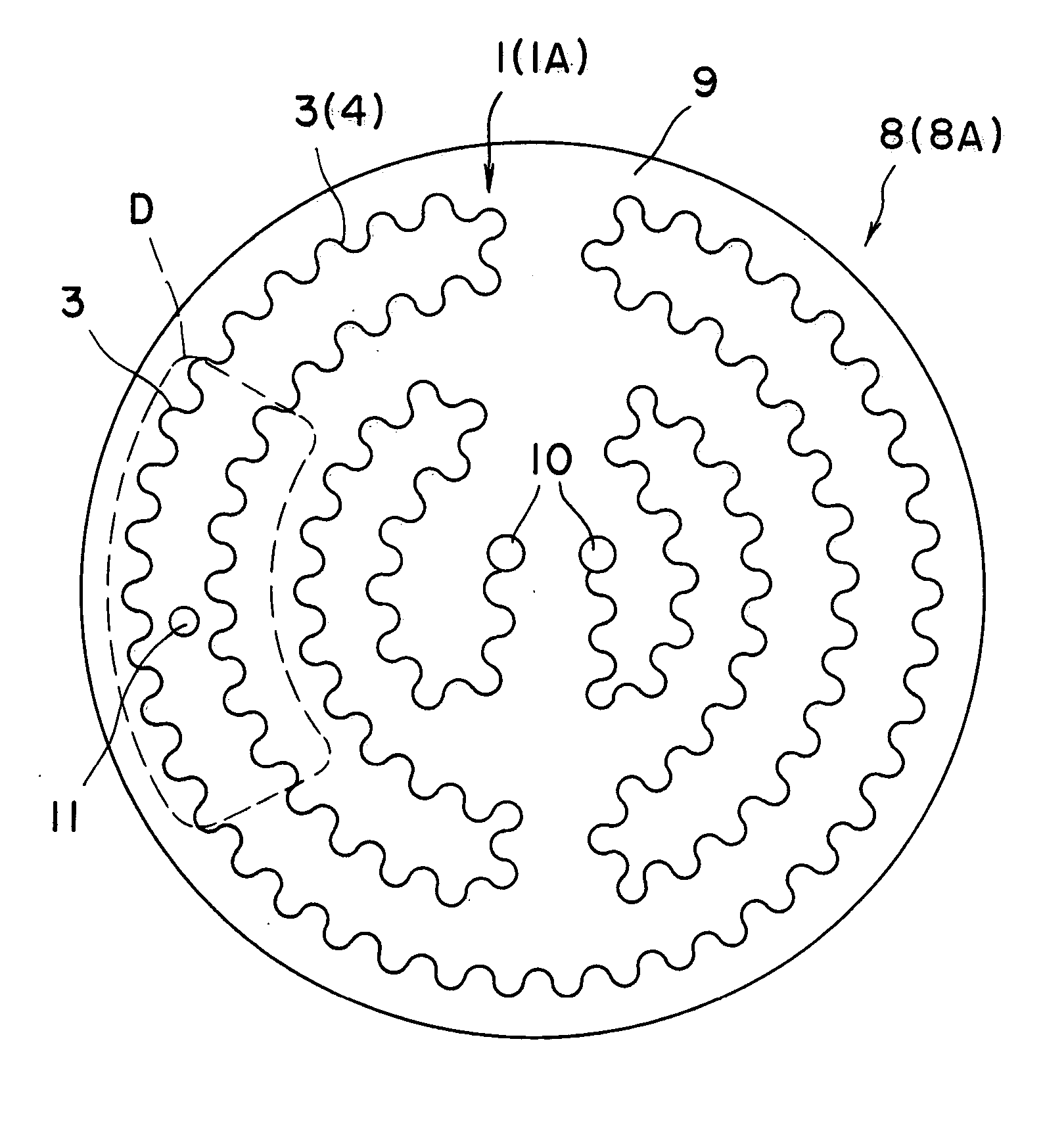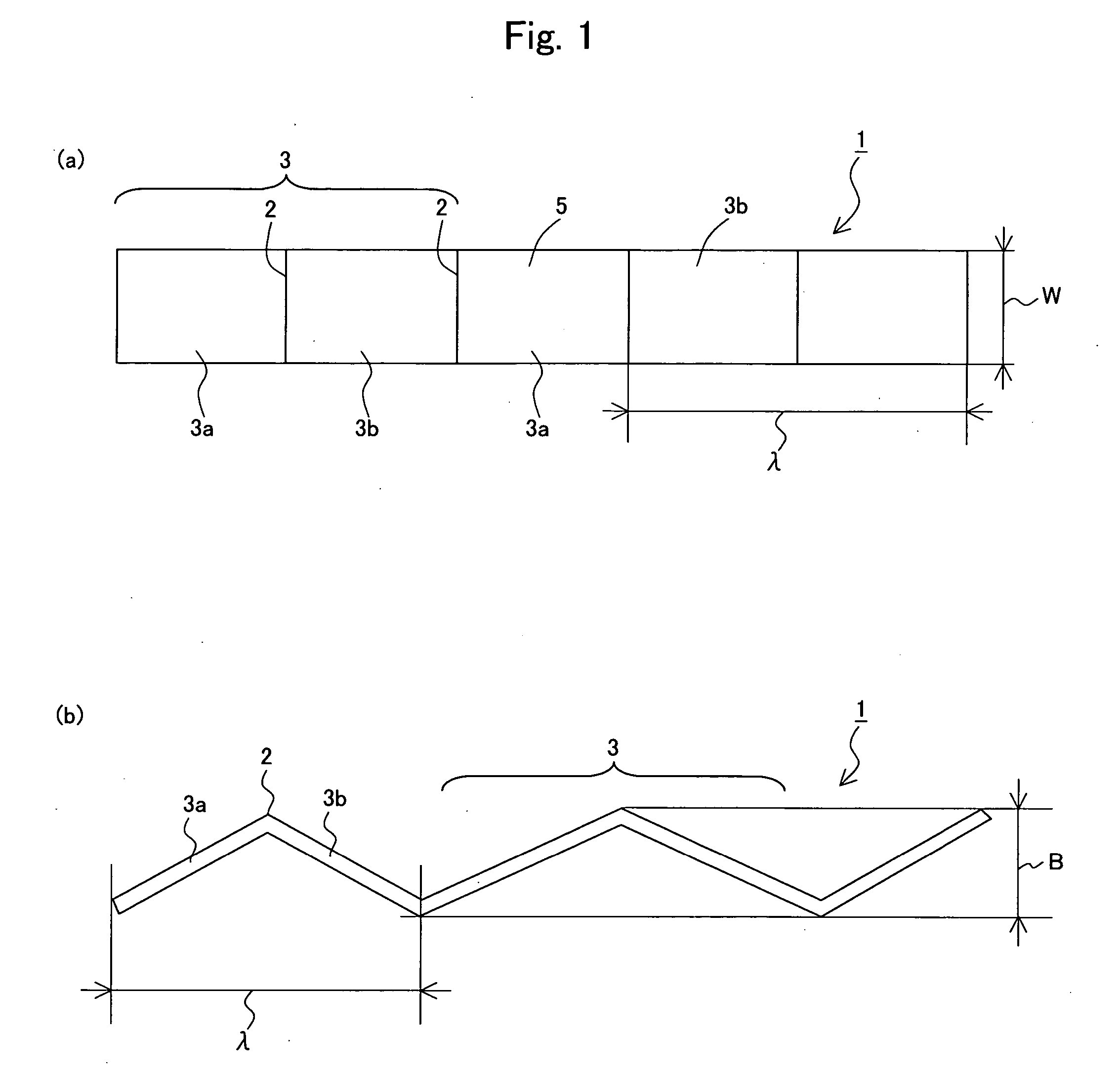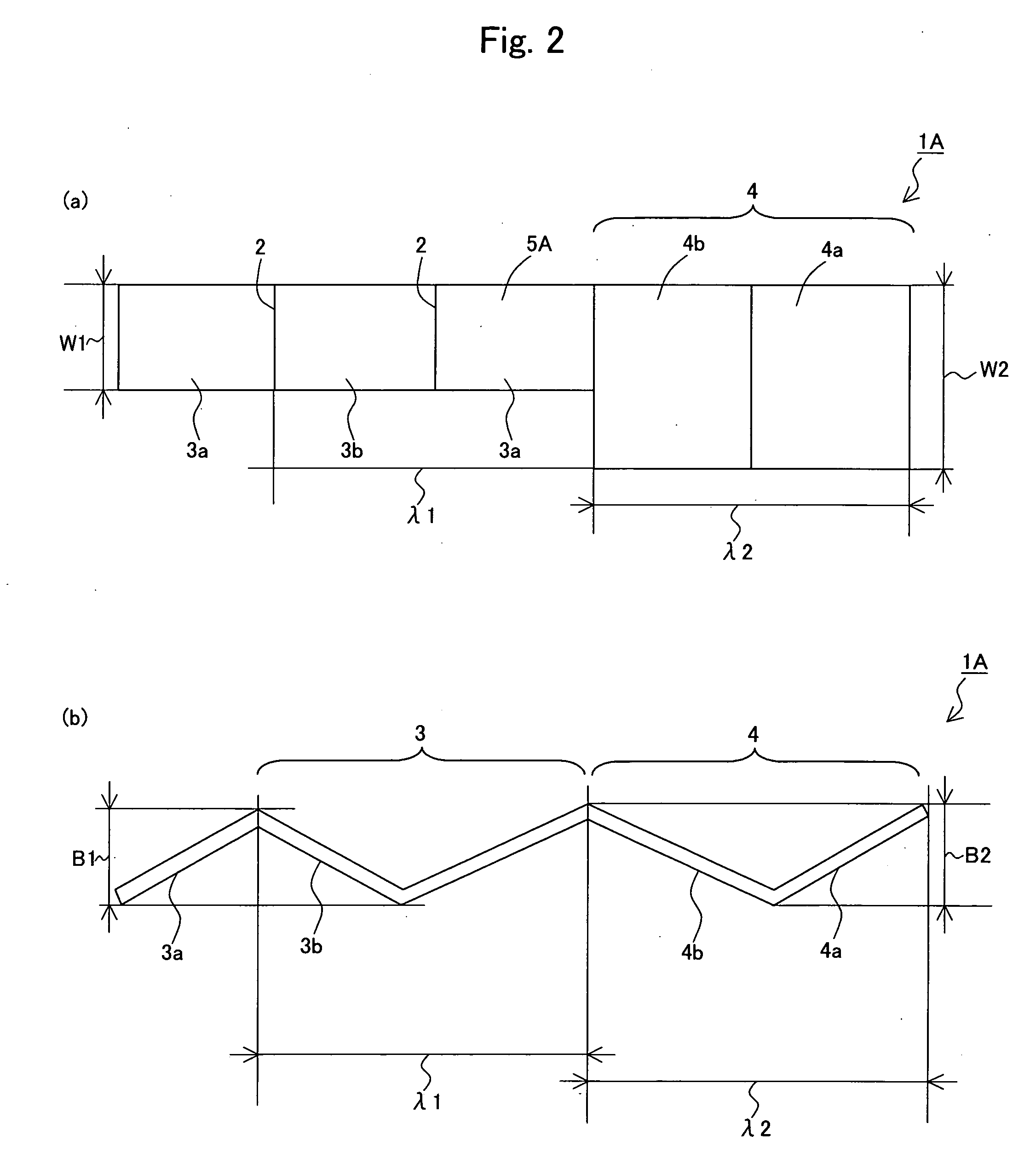Heating resistances and heaters
a heat resistance and heater technology, applied in the field of heat resistance and heaters, can solve the problems of hot spots on the heating face, difficult processing, and hard wire made of such high melting point metal, and achieve the effects of easy control of the pitch “ ” of the repetition unit, easy adjustment, and high precision
- Summary
- Abstract
- Description
- Claims
- Application Information
AI Technical Summary
Benefits of technology
Problems solved by technology
Method used
Image
Examples
example 1
[0060] The heater 8 described referring to FIGS. 3 and 4(a) was produced and the temperature distribution on the surface 9a was measured.
[0061] Specifically, the substrate 9 was made of aluminum nitride sintered body having a diameter Ø of 350 mm and a thickness of 20 mm. The heating resistance 1 shown in FIGS. 1(a) and 1(b) was embedded in the substrate 9. The band 1 was formed of molybdenum and had a thickness of 0.2 mm and width “W” of 10 mm. The pitch “λ” of the repetition unit 3 was 1 to 7 mm and the amplitude “B” of the repetition unit 3 was 3 mm.
[0062] The temperature of the ceramic heater was raised so that the average temperature on the surface 9a reached about 500° C. The temperature distribution on the surface 9a was observed with a thermoviewer. FIG. 11(a) shows the thus obtained contour lines of temperature. The minimum temperature point of 493° C. was near the through holes 11. The maximum temperature point of 503° C. was on the outer periphery on the opposite side t...
example 2
[0063] The heater 8A described referring to FIGS. 3 and 4(b) was produced and the temperature distribution on the surface 9a was measured.
[0064] The heating resistance 1A shown in FIGS. 2(a) and 2(b) was embedded in the substrate 9. The band 5A was formed of molybdenum and had a thickness of 0.2 mm. The width “W1” was 7 mm, pitch “λ1” was 1 to 7 mm and amplitude “B1” was 3 mm in the repetition unit 3. The width “W2” was 10 mm which was larger than W1, pitch “λ2” was 1 to 7 mm and amplitude “B2” was 3 mm in the repetition unit 4.
[0065] The temperature of the ceramic heater was raised so that the average temperature on the surface 9a reached about 500° C. The temperature distribution on the surface 9a was observed with a thermoviewer. FIG. 11(b) shows the thus obtained contour lines of temperature. The minimum temperature point of 494° C. was observed at the outer periphery. The maximum temperature point of 501° C. was near the center of the surface 9a. The difference of the maximum...
example 3
[0066] The heater 18 described referring to FIGS. 6 and 8 was produced and the temperature distribution on the surface 9a was measured.
[0067] Specifically, the substrate 9 was made of aluminum nitride sintered body had a diameter Ø of 350 mm and a thickness of 20 mm. The heating resistance 12 shown in FIG. 6 was embedded in the substrate 9. The band 20 was formed of molybdenum and had a thickness of 0.2 mm and a width “W” of 10 mm. The pitch “λ” was 1 to 7 mm the winding diameter “E” was 4 mm in the repetition unit 13.
[0068] The temperature of the ceramic heater was raised so that the average temperature on the surface 9a reached about 500° C. The temperature distribution on the surface 9a was observed with a thermoviewer. The difference of the maximum and minimum temperatures was 8° C. to prove that the temperature uniformity on the surface can be considerably improved.
PUM
 Login to View More
Login to View More Abstract
Description
Claims
Application Information
 Login to View More
Login to View More - R&D
- Intellectual Property
- Life Sciences
- Materials
- Tech Scout
- Unparalleled Data Quality
- Higher Quality Content
- 60% Fewer Hallucinations
Browse by: Latest US Patents, China's latest patents, Technical Efficacy Thesaurus, Application Domain, Technology Topic, Popular Technical Reports.
© 2025 PatSnap. All rights reserved.Legal|Privacy policy|Modern Slavery Act Transparency Statement|Sitemap|About US| Contact US: help@patsnap.com



